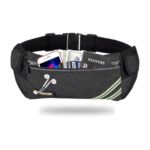Table of Contents
- 1. Introduction: Importance of accurate activity tracking data
- 2. Understanding your activity tracker technology
- 3. Steps to calibrate your activity tracker
- 4. Tips for maintaining calibration accuracy
- 5. Testing the accuracy of your tracker data
- 6. Troubleshooting common calibration issues
- 7. Conclusion: Enjoy precise data tracking results
1. Introduction: Importance of accurate activity tracking data
Accurate activity tracking data is the cornerstone of any fitness journey. It provides valuable insights into your progress, helps you set realistic goals, and allows you to make informed decisions about your health and wellness. With the rise of wearable technology and fitness apps, tracking our daily activities has become easier than ever. However, the accuracy of this data is crucial to ensure that we are making meaningful improvements in our overall well-being.
2. Understanding your activity tracker technology
Understanding your activity tracker technology is crucial for maximizing the benefits of your fitness routine. These devices are equipped with a range of sensors that track your movement, heart rate, sleep patterns, and more to provide you with comprehensive data on your daily activities. By familiarizing yourself with the technical aspects of your activity tracker, you can ensure accurate tracking and efficient use of its features.
One key component to understand is the accuracy of the sensor readings in different scenarios. Factors such as skin contact, movement intensity, and device placement can affect the precision of data gathered by your tracker. Learning how these variables influence the reliability of your device’s measurements allows you to make necessary adjustments for optimal performance.
Moreover, delving into the software and algorithms used in activity trackers can provide valuable insights into how they interpret raw data into meaningful metrics for users. Understanding how these systems analyze information can help you interpret your stats effectively and tailor your fitness routines to meet specific goals or targets more effectively. By diving deeper into the technology behind these devices, users can unlock their full potential for tracking progress and improving overall health and fitness levels.
3. Steps to calibrate your activity tracker
Step 1: Find a flat, open space and start with a brisk walk or light jog for about 10-15 minutes to get your heart rate up. This initial activity will help the tracker capture accurate data regarding your movement and exertion levels.
Step 2: Once you’ve completed the warm-up session, pause to check your tracker’s readings compared to how you feel physically. It is essential to ensure that the device is in sync with your actual activity level to avoid any discrepancies in data recording.
Step 3: After verifying the accuracy, continue with a variety of movements such as running, cycling, or even climbing stairs at different speeds and intensities. This diverse range of activities will help calibrate the tracker across various types of exercises for comprehensive fitness monitoring.
4. Tips for maintaining calibration accuracy
1. Regular calibration is crucial for maintaining accuracy in your activity tracker. To ensure consistent and reliable data tracking, it’s essential to follow a few key tips. Firstly, always refer to the manufacturer’s guidelines for calibration instructions specific to your device. This will help you understand the recommended frequency and steps involved in the process.
2. Secondly, consider calibrating your activity tracker in different environments and conditions to account for variability. For instance, if you primarily use it indoors, try calibrating it during an outdoor workout to capture more diverse data points. This approach can help improve the overall accuracy of your tracker by ensuring it adapts well to various settings.
3. Lastly, don’t overlook the importance of proper maintenance and care when it comes to calibration accuracy. Keep your device clean and free from debris that could interfere with its sensors or performance. By incorporating these tips into your calibration routine, you can enhance the precision of your activity tracker and optimize its functionality for better data tracking results.
5. Testing the accuracy of your tracker data
Testing the accuracy of your tracker data is essential to ensure that you are getting reliable information about your activity levels. One way to test the accuracy of your tracker is by comparing its readings with a known distance or number of steps. For example, you can walk a specific distance using a pedometer to see if the tracker records the correct number of steps. Additionally, performing activities with known outcomes, such as running on a treadmill with recorded speed and distance, can help validate the accuracy of your tracker’s data.
Another method to test the accuracy of your tracker data is by wearing multiple trackers simultaneously and comparing their results. This approach can help identify any discrepancies between devices and give you a better understanding of which one provides more accurate measurements. Keep in mind that factors like device positioning, firmware updates, and battery levels can also impact the reliability of your tracker’s data. By testing and verifying the accuracy of your tracker data through various methods, you can ensure that you are making informed decisions based on reliable information for tracking your fitness progress effectively.
6. Troubleshooting common calibration issues
Calibration issues can be a frustrating roadblock on the path to accurate data tracking with your activity tracker. One common problem users face is inaccurate step counts, which can throw off overall activity measurements. If you notice that your tracker is not counting steps correctly, try recalibrating it by referencing a known distance and manually adjusting the settings.
Another issue that arises frequently is discrepancies in heart rate readings. This could be due to a variety of factors such as how the device sits on your wrist or skin conditions affecting sensor accuracy. To troubleshoot this problem, make sure the tracker is snug on your wrist and clean the sensors regularly to ensure proper contact with your skin for optimal performance.
7. Conclusion: Enjoy precise data tracking results
In conclusion, the journey to achieving accurate data tracking results with your activity tracker can be a rewarding and enlightening experience. By following the steps outlined in this guide, you have equipped yourself with the knowledge and tools needed to ensure precise tracking of your fitness activities. Embrace the power of calibration as a way to fine-tune your tracker’s measurements and enable it to provide you with reliable data that reflects your true progress.
Enjoy the benefits of having confidence in the accuracy of your activity tracker as you strive towards reaching your fitness goals. Remember that calibrated trackers not only aid in monitoring performance but also serve as motivational tools by showing tangible evidence of your hard work paying off. With precise data tracking results at your fingertips, you are better equipped to make informed decisions about your health and fitness routine, leading to more efficient and effective workouts. Embrace this newfound precision in tracking as a key component of optimizing your overall wellness journey.















